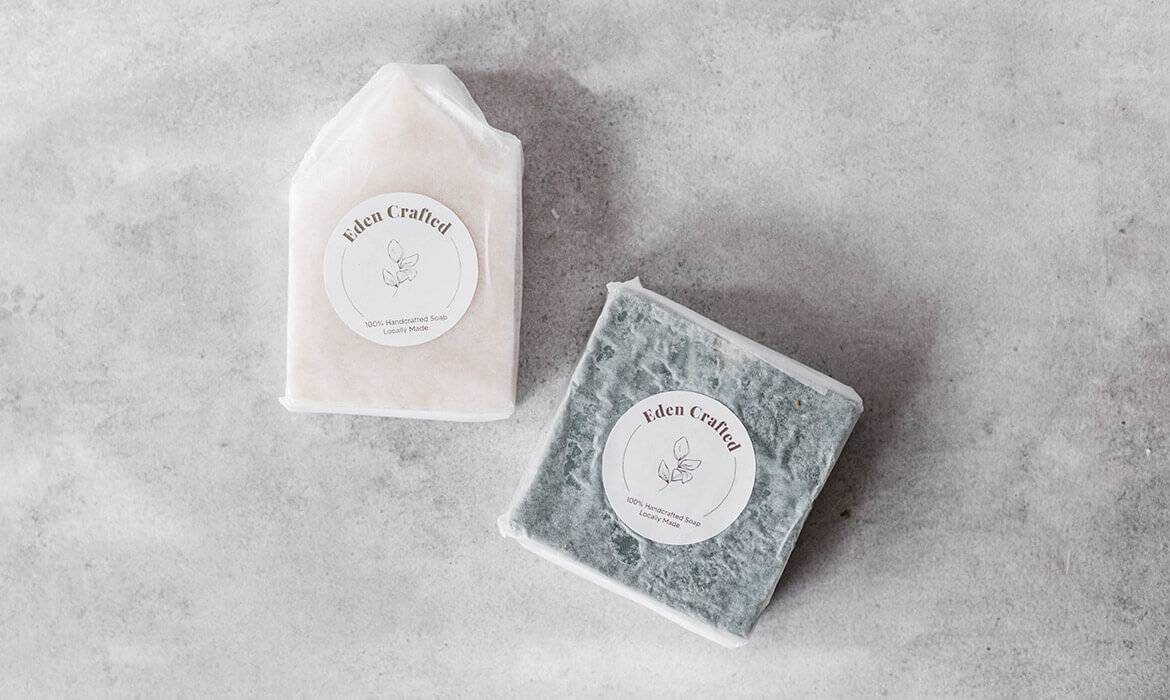Tag: soap
How natural soap is changing the planet
The deep, resiny scent of Balsam Fir not only smells amazing—like walking through the forest with fresh brush underfoot—it’s good for you, too. The Balsam Fir (Abies balsamea) is an evergreen conifer that’s found abundantly in the Boreal Forest here in Canada (where we source our oil). But more than making your Foot Butter smell like a wild forest, fir has a long history as a remedy for a variety of ailments.
The healing and antiseptic properties of Fir also make it a star ingredient in our Foot Butter. It works to banish cracks in your skin while helping prevent bacterial growth. Not to mention it smells like a little forest you can keep in your pocket. What’s not to love? Unsurprisingly, the Balsam Fir has a long history with many First Nations as a remedy. The antimicrobial effects of Balsam Fir were found to be potent enough that Indigenous Peoples used the oil as an antiseptic on wounds. The Chippewa First Nation reportedly used the gum as an analgetic.
The saddest aspect of life right now is that science gathers knowledge faster than society gathers wisdom. – AMINA OLSON
Many other Nations used the tree to treat things like cold sores, cuts, pains, for sweat baths, and even as a cancer treatment. Researchers have also found the oil to have some anti-tumoral (prohibiting or preventing the growth of tumors) properties.

Why we use only natural ingredients
Boreal forests cover approximately 30% of the world’s forest area “and store as much or more carbon than tropical forests,” writes the Aromatic Plant Research Center. The forests also provide 33% of world lumber and 25% of paper. According to the Center, the Balsam Fir is abundant and nowhere near endangered, so we don’t need to worry about running out or damaging the ecosystem anytime soon.
More importantly, the essential oil we use to make our products is distilled from the needles and bark stripped from trees that have been logged for timber. This way the oil is a byproduct of the existing timber industry, rather than a competing production. Although the tree is (thankfully) thriving for now, the habitat where Balsam Fir trees grow is, in some cases, protected. For example one of our Community Bar Partners, Nature Conservancy Canada, protects more than 100 properties where the trees grow—stretching from Newfoundland to Saskatchewan.
The recipe of natural aloe handcrafted soap
The deep, resiny scent of Balsam Fir not only smells amazing—like walking through the forest with fresh brush underfoot—it’s good for you, too. The Balsam Fir (Abies balsamea) is an evergreen conifer that’s found abundantly in the Boreal Forest here in Canada (where we source our oil). But more than making your Foot Butter smell like a wild forest, fir has a long history as a remedy for a variety of ailments.
The healing and antiseptic properties of Fir also make it a star ingredient in our Foot Butter. It works to banish cracks in your skin while helping prevent bacterial growth. Not to mention it smells like a little forest you can keep in your pocket. What’s not to love? Unsurprisingly, the Balsam Fir has a long history with many First Nations as a remedy. The antimicrobial effects of Balsam Fir were found to be potent enough that Indigenous Peoples used the oil as an antiseptic on wounds. The Chippewa First Nation reportedly used the gum as an analgetic.
The saddest aspect of life right now is that science gathers knowledge faster than society gathers wisdom. – AMINA OLSON
Many other Nations used the tree to treat things like cold sores, cuts, pains, for sweat baths, and even as a cancer treatment. Researchers have also found the oil to have some anti-tumoral (prohibiting or preventing the growth of tumors) properties.

Why we use only natural ingredients
Boreal forests cover approximately 30% of the world’s forest area “and store as much or more carbon than tropical forests,” writes the Aromatic Plant Research Center. The forests also provide 33% of world lumber and 25% of paper. According to the Center, the Balsam Fir is abundant and nowhere near endangered, so we don’t need to worry about running out or damaging the ecosystem anytime soon.
More importantly, the essential oil we use to make our products is distilled from the needles and bark stripped from trees that have been logged for timber. This way the oil is a byproduct of the existing timber industry, rather than a competing production. Although the tree is (thankfully) thriving for now, the habitat where Balsam Fir trees grow is, in some cases, protected. For example one of our Community Bar Partners, Nature Conservancy Canada, protects more than 100 properties where the trees grow—stretching from Newfoundland to Saskatchewan.
Get a calm complexion with chamomile
The deep, resiny scent of Balsam Fir not only smells amazing—like walking through the forest with fresh brush underfoot—it’s good for you, too. The Balsam Fir (Abies balsamea) is an evergreen conifer that’s found abundantly in the Boreal Forest here in Canada (where we source our oil). But more than making your Foot Butter smell like a wild forest, fir has a long history as a remedy for a variety of ailments.
The healing and antiseptic properties of Fir also make it a star ingredient in our Foot Butter. It works to banish cracks in your skin while helping prevent bacterial growth. Not to mention it smells like a little forest you can keep in your pocket. What’s not to love? Unsurprisingly, the Balsam Fir has a long history with many First Nations as a remedy. The antimicrobial effects of Balsam Fir were found to be potent enough that Indigenous Peoples used the oil as an antiseptic on wounds. The Chippewa First Nation reportedly used the gum as an analgetic.
The saddest aspect of life right now is that science gathers knowledge faster than society gathers wisdom. – AMINA OLSON
Many other Nations used the tree to treat things like cold sores, cuts, pains, for sweat baths, and even as a cancer treatment. Researchers have also found the oil to have some anti-tumoral (prohibiting or preventing the growth of tumors) properties.

Why we use only natural ingredients
Boreal forests cover approximately 30% of the world’s forest area “and store as much or more carbon than tropical forests,” writes the Aromatic Plant Research Center. The forests also provide 33% of world lumber and 25% of paper. According to the Center, the Balsam Fir is abundant and nowhere near endangered, so we don’t need to worry about running out or damaging the ecosystem anytime soon.
More importantly, the essential oil we use to make our products is distilled from the needles and bark stripped from trees that have been logged for timber. This way the oil is a byproduct of the existing timber industry, rather than a competing production. Although the tree is (thankfully) thriving for now, the habitat where Balsam Fir trees grow is, in some cases, protected. For example one of our Community Bar Partners, Nature Conservancy Canada, protects more than 100 properties where the trees grow—stretching from Newfoundland to Saskatchewan.
Happy handwashing day! Take care of yourself
The deep, resiny scent of Balsam Fir not only smells amazing—like walking through the forest with fresh brush underfoot—it’s good for you, too. The Balsam Fir (Abies balsamea) is an evergreen conifer that’s found abundantly in the Boreal Forest here in Canada (where we source our oil). But more than making your Foot Butter smell like a wild forest, fir has a long history as a remedy for a variety of ailments.
The healing and antiseptic properties of Fir also make it a star ingredient in our Foot Butter. It works to banish cracks in your skin while helping prevent bacterial growth. Not to mention it smells like a little forest you can keep in your pocket. What’s not to love? Unsurprisingly, the Balsam Fir has a long history with many First Nations as a remedy. The antimicrobial effects of Balsam Fir were found to be potent enough that Indigenous Peoples used the oil as an antiseptic on wounds. The Chippewa First Nation reportedly used the gum as an analgetic.
The saddest aspect of life right now is that science gathers knowledge faster than society gathers wisdom. – AMINA OLSON
Many other Nations used the tree to treat things like cold sores, cuts, pains, for sweat baths, and even as a cancer treatment. Researchers have also found the oil to have some anti-tumoral (prohibiting or preventing the growth of tumors) properties.

Why we use only natural ingredients
Boreal forests cover approximately 30% of the world’s forest area “and store as much or more carbon than tropical forests,” writes the Aromatic Plant Research Center. The forests also provide 33% of world lumber and 25% of paper. According to the Center, the Balsam Fir is abundant and nowhere near endangered, so we don’t need to worry about running out or damaging the ecosystem anytime soon.
More importantly, the essential oil we use to make our products is distilled from the needles and bark stripped from trees that have been logged for timber. This way the oil is a byproduct of the existing timber industry, rather than a competing production. Although the tree is (thankfully) thriving for now, the habitat where Balsam Fir trees grow is, in some cases, protected. For example one of our Community Bar Partners, Nature Conservancy Canada, protects more than 100 properties where the trees grow—stretching from Newfoundland to Saskatchewan.
Meet music for your mood
The deep, resiny scent of Balsam Fir not only smells amazing—like walking through the forest with fresh brush underfoot—it’s good for you, too. The Balsam Fir (Abies balsamea) is an evergreen conifer that’s found abundantly in the Boreal Forest here in Canada (where we source our oil). But more than making your Foot Butter smell like a wild forest, fir has a long history as a remedy for a variety of ailments.
The healing and antiseptic properties of Fir also make it a star ingredient in our Foot Butter. It works to banish cracks in your skin while helping prevent bacterial growth. Not to mention it smells like a little forest you can keep in your pocket. What’s not to love? Unsurprisingly, the Balsam Fir has a long history with many First Nations as a remedy. The antimicrobial effects of Balsam Fir were found to be potent enough that Indigenous Peoples used the oil as an antiseptic on wounds. The Chippewa First Nation reportedly used the gum as an analgetic.
The saddest aspect of life right now is that science gathers knowledge faster than society gathers wisdom. – AMINA OLSON
Many other Nations used the tree to treat things like cold sores, cuts, pains, for sweat baths, and even as a cancer treatment. Researchers have also found the oil to have some anti-tumoral (prohibiting or preventing the growth of tumors) properties.

Why we use only natural ingredients
Boreal forests cover approximately 30% of the world’s forest area “and store as much or more carbon than tropical forests,” writes the Aromatic Plant Research Center. The forests also provide 33% of world lumber and 25% of paper. According to the Center, the Balsam Fir is abundant and nowhere near endangered, so we don’t need to worry about running out or damaging the ecosystem anytime soon.
More importantly, the essential oil we use to make our products is distilled from the needles and bark stripped from trees that have been logged for timber. This way the oil is a byproduct of the existing timber industry, rather than a competing production. Although the tree is (thankfully) thriving for now, the habitat where Balsam Fir trees grow is, in some cases, protected. For example one of our Community Bar Partners, Nature Conservancy Canada, protects more than 100 properties where the trees grow—stretching from Newfoundland to Saskatchewan.
New! Coconut… the dark side of vanilla
The deep, resiny scent of Balsam Fir not only smells amazing—like walking through the forest with fresh brush underfoot—it’s good for you, too. The Balsam Fir (Abies balsamea) is an evergreen conifer that’s found abundantly in the Boreal Forest here in Canada (where we source our oil). But more than making your Foot Butter smell like a wild forest, fir has a long history as a remedy for a variety of ailments.
The healing and antiseptic properties of Fir also make it a star ingredient in our Foot Butter. It works to banish cracks in your skin while helping prevent bacterial growth. Not to mention it smells like a little forest you can keep in your pocket. What’s not to love? Unsurprisingly, the Balsam Fir has a long history with many First Nations as a remedy. The antimicrobial effects of Balsam Fir were found to be potent enough that Indigenous Peoples used the oil as an antiseptic on wounds. The Chippewa First Nation reportedly used the gum as an analgetic.
The saddest aspect of life right now is that science gathers knowledge faster than society gathers wisdom. – AMINA OLSON
Many other Nations used the tree to treat things like cold sores, cuts, pains, for sweat baths, and even as a cancer treatment. Researchers have also found the oil to have some anti-tumoral (prohibiting or preventing the growth of tumors) properties.

Why we use only natural ingredients
Boreal forests cover approximately 30% of the world’s forest area “and store as much or more carbon than tropical forests,” writes the Aromatic Plant Research Center. The forests also provide 33% of world lumber and 25% of paper. According to the Center, the Balsam Fir is abundant and nowhere near endangered, so we don’t need to worry about running out or damaging the ecosystem anytime soon.
More importantly, the essential oil we use to make our products is distilled from the needles and bark stripped from trees that have been logged for timber. This way the oil is a byproduct of the existing timber industry, rather than a competing production. Although the tree is (thankfully) thriving for now, the habitat where Balsam Fir trees grow is, in some cases, protected. For example one of our Community Bar Partners, Nature Conservancy Canada, protects more than 100 properties where the trees grow—stretching from Newfoundland to Saskatchewan.
Whether spare or elaborate, harmonious moldings are the mark of a successful classical interior
How we get bubbles naturally
The deep, resiny scent of Balsam Fir not only smells amazing—like walking through the forest with fresh brush underfoot—it’s good for you, too. The Balsam Fir (Abies balsamea) is an evergreen conifer that’s found abundantly in the Boreal Forest here in Canada (where we source our oil). But more than making your Foot Butter smell like a wild forest, fir has a long history as a remedy for a variety of ailments.
The healing and antiseptic properties of Fir also make it a star ingredient in our Foot Butter. It works to banish cracks in your skin while helping prevent bacterial growth. Not to mention it smells like a little forest you can keep in your pocket. What’s not to love? Unsurprisingly, the Balsam Fir has a long history with many First Nations as a remedy. The antimicrobial effects of Balsam Fir were found to be potent enough that Indigenous Peoples used the oil as an antiseptic on wounds. The Chippewa First Nation reportedly used the gum as an analgetic.
The saddest aspect of life right now is that science gathers knowledge faster than society gathers wisdom. – AMINA OLSON
Many other Nations used the tree to treat things like cold sores, cuts, pains, for sweat baths, and even as a cancer treatment. Researchers have also found the oil to have some anti-tumoral (prohibiting or preventing the growth of tumors) properties.

Why we use only natural ingredients
Boreal forests cover approximately 30% of the world’s forest area “and store as much or more carbon than tropical forests,” writes the Aromatic Plant Research Center. The forests also provide 33% of world lumber and 25% of paper. According to the Center, the Balsam Fir is abundant and nowhere near endangered, so we don’t need to worry about running out or damaging the ecosystem anytime soon.
More importantly, the essential oil we use to make our products is distilled from the needles and bark stripped from trees that have been logged for timber. This way the oil is a byproduct of the existing timber industry, rather than a competing production. Although the tree is (thankfully) thriving for now, the habitat where Balsam Fir trees grow is, in some cases, protected. For example one of our Community Bar Partners, Nature Conservancy Canada, protects more than 100 properties where the trees grow—stretching from Newfoundland to Saskatchewan.
What is the best skincare routine for oily skin?
The deep, resiny scent of Balsam Fir not only smells amazing—like walking through the forest with fresh brush underfoot—it’s good for you, too. The Balsam Fir (Abies balsamea) is an evergreen conifer that’s found abundantly in the Boreal Forest here in Canada (where we source our oil). But more than making your Foot Butter smell like a wild forest, fir has a long history as a remedy for a variety of ailments.
The healing and antiseptic properties of Fir also make it a star ingredient in our Foot Butter. It works to banish cracks in your skin while helping prevent bacterial growth. Not to mention it smells like a little forest you can keep in your pocket. What’s not to love? Unsurprisingly, the Balsam Fir has a long history with many First Nations as a remedy. The antimicrobial effects of Balsam Fir were found to be potent enough that Indigenous Peoples used the oil as an antiseptic on wounds. The Chippewa First Nation reportedly used the gum as an analgetic.
The saddest aspect of life right now is that science gathers knowledge faster than society gathers wisdom. – AMINA OLSON
Many other Nations used the tree to treat things like cold sores, cuts, pains, for sweat baths, and even as a cancer treatment. Researchers have also found the oil to have some anti-tumoral (prohibiting or preventing the growth of tumors) properties.

Why we use only natural ingredients
Boreal forests cover approximately 30% of the world’s forest area “and store as much or more carbon than tropical forests,” writes the Aromatic Plant Research Center. The forests also provide 33% of world lumber and 25% of paper. According to the Center, the Balsam Fir is abundant and nowhere near endangered, so we don’t need to worry about running out or damaging the ecosystem anytime soon.
More importantly, the essential oil we use to make our products is distilled from the needles and bark stripped from trees that have been logged for timber. This way the oil is a byproduct of the existing timber industry, rather than a competing production. Although the tree is (thankfully) thriving for now, the habitat where Balsam Fir trees grow is, in some cases, protected. For example one of our Community Bar Partners, Nature Conservancy Canada, protects more than 100 properties where the trees grow—stretching from Newfoundland to Saskatchewan.
What is the best care routine for oily skin?
The deep, resiny scent of Balsam Fir not only smells amazing—like walking through the forest with fresh brush underfoot—it’s good for you, too. The Balsam Fir (Abies balsamea) is an evergreen conifer that’s found abundantly in the Boreal Forest here in Canada (where we source our oil). But more than making your Foot Butter smell like a wild forest, fir has a long history as a remedy for a variety of ailments.
The healing and antiseptic properties of Fir also make it a star ingredient in our Foot Butter. It works to banish cracks in your skin while helping prevent bacterial growth. Not to mention it smells like a little forest you can keep in your pocket. What’s not to love? Unsurprisingly, the Balsam Fir has a long history with many First Nations as a remedy. The antimicrobial effects of Balsam Fir were found to be potent enough that Indigenous Peoples used the oil as an antiseptic on wounds. The Chippewa First Nation reportedly used the gum as an analgetic.
The saddest aspect of life right now is that science gathers knowledge faster than society gathers wisdom.– AMINA OLSON
Many other Nations used the tree to treat things like cold sores, cuts, pains, for sweat baths, and even as a cancer treatment. Researchers have also found the oil to have some anti-tumoral (prohibiting or preventing the growth of tumors) properties.

Why we use only natural ingredients
Boreal forests cover approximately 30% of the world’s forest area “and store as much or more carbon than tropical forests,” writes the Aromatic Plant Research Center. The forests also provide 33% of world lumber and 25% of paper. According to the Center, the Balsam Fir is abundant and nowhere near endangered, so we don’t need to worry about running out or damaging the ecosystem anytime soon.
More importantly, the essential oil we use to make our products is distilled from the needles and bark stripped from trees that have been logged for timber. This way the oil is a byproduct of the existing timber industry, rather than a competing production. Although the tree is (thankfully) thriving for now, the habitat where Balsam Fir trees grow is, in some cases, protected. For example one of our Community Bar Partners, Nature Conservancy Canada, protects more than 100 properties where the trees grow—stretching from Newfoundland to Saskatchewan.




